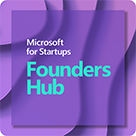We recently talked to Calum Bird, founder, and CEO of Trelent, to talk about his journey launching his startup with AI. Trelent is solving a major problem for developers, intelligent source code documentation, and empowering high-growth startups and enterprise tech companies that need quality documentation to onboard new engineers. Trelent scaled its solution and accommodated the data security and residency needs of enterprise customers, all within the year from inception to seeking product-market fit. This impressive increase in speed to market is the perfect use case for Azure OpenAI Service adoption in a startup, so we sat down with their founder and CEO, Calum Bird, to dig into their story.
Trelent’s inception story
“Trelent was founded to let developers keep developing. It fully automates code documentation on their behalf. We started with talking to and helping individual developers but quickly realized that documentation is much more of an issue within a larger organization where there may be thousands of engineers touching documentation. Specifically, teams that are growing over 50% year over year, experience a high degree of trouble with documentation. Increasingly, we’re seeing teams move to distributed positions, spanning countries. That’s where we’re focused on.”
Building with Azure OpenAI Service vs in-house model development
“For the startups working with these large models, it’s very tempting to want to reinvent the wheel. You want to prove that you have the technical chops to go and do it. However, Trelent uses some of the most powerful machine learning algorithms, many of which are powered by Microsoft’s Azure OpenAI Service.
With a team like Azure OpenAI Service behind you, you can focus a lot more on what really matters, which is delivering a great experience, a great product, and a lot of value to your customers.
By leveraging the idea of the AI service and the support team, we’re able to keep our headcount low and costs down. We can focus on iterating and delivering great customer experiences. We can be a very nimble and small team and focus our efforts on what matters instead of constantly having to reinvent the wheel with machine-learning solutions. As is the case with most products that are built on top of these platforms, the underlying models are only half the innovation. The rest comes from prompt engineering, fine-tuning these models and data sets, and getting customer feedback to improve how we’re prompting these models. We focused on all that engineering effort in the previous ten months, before I went live on Azure.”
Finding product market fit
“We found that where documentation shines is in industries where a lot of security and server information upkeep is required. For example, financial institutions make sure their systems are very robust. And, honestly, in most places where you find a lot of compliance, developers need to be able to understand what they’re building. Based on that, Trelent has particularly shined quite brightly among enterprises in high security and financial industry verticals.
To target this industry, we migrated our solution to Microsoft’s Azure OpenAI Service. After a smooth transition, we’ve seen promising returns, including significant improvement in response time thanks to distributed regions in Azure.
We have users across 50 countries, so the availability of OpenAI Service in multiple regions, plus the benefits, is simply something we could not find on another platform. It made the move to OpenAI Service a no-brainer.
Previously, our requests could take a second—occasionally as long as three seconds—to generate. Now the average is down to around 750 milliseconds. It’s a small but impactful change when an individual developer might make dozens or hundreds of requests each day.”
Trelent’s vision for the future?
“Our goal is really to build a world where anybody can build and write software. We see natural language as the next sort of programing language that people use. We want to make programming and software accessible to absolutely anybody. Our long-term goal boils down to just that – enabling anybody to build software without technical training. Documentation is just a start.”
We’re excited to have Trelent as part of Microsoft for Startups Founders Hub, where they are accessing Azure credits, webinars, and expert guidance to climb upwards in their startup journey.
To get started with Microsoft for Startups Founders Hub, sign up here.














